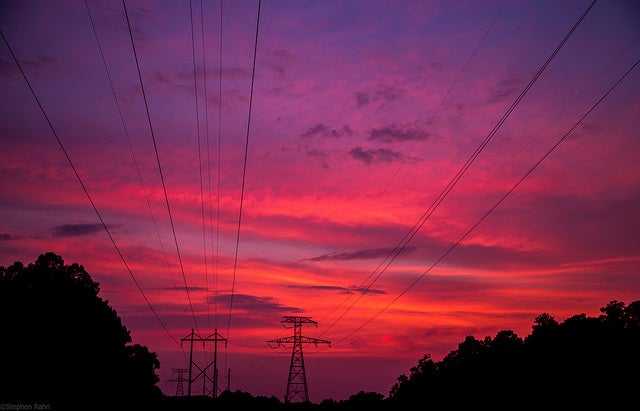
The Trump Administration’s energy and climate policies are evolving, although few specifics have been proposed to date. Let’s focus on what we do know:
1. The Administration has stated its intent to stimulate increased production and consumption of fossil fuels through policies typically supported by Republicans.
In general, these fuels contribute to public health, air quality problems, and climate change. The Administration has not made specific proposals on how it intends to maintain or expand the use of nuclear power, develop technologies to enable the use of coal in the power sector in an environmentally acceptable fashion, or continue the progress made to increase the use of renewables and improve energy efficiency. We also don’t have an answer on how President Trump intends to deal with the Paris Agreement on Climate Change.
2. Energy and environmental policies have significant impacts on national security and our economic and environmental health.
They are also extremely contentious. In prior times, when Washington was not as partisan, the debate over such policies focused primarily on their impacts on regional economies and fuel markets. At present, they are amongst the most partisan issues that policy-makers grapple with. This is the case even though many would agree that the goal of energy policies should be to ensure adequate, reliable, affordable supplies to enhance national security and support economic growth while protecting the environment and public health. The Administration’s proposals to relax certain rules primarily impact fossil fuel production and are targeted to benefit certain regions of the country. But they will not lead to the continued development and deployment of non-emitting technologies, which create new economic opportunities while protecting public health and the environment.
3. We need policies that create the energy technologies of the future and simultaneously advance our national security, economic, and environmental objectives.
These technologies are essential to enable the use of our abundant domestic coal resources, maintain and expand the use of nuclear power, increase the use of renewable energy sources, and improve energy efficiency. They will not simply appear through the magic of the marketplace. A long-term strategy is required to improve the economic and environmental performance of existing energy technologies, to create new ones, and to pull them into the market place. Elements of a technology strategy include a robust investment in energy research development and demonstration (RD&D) and complementary policies. Some specifics follow.
“Spending on energy RD&D has declined for 30 years and was only 25 percent of 1978 levels in 2010.”
Increase U.S. RD&D Spending
Unlike many public issues, there is general agreement that the government has a key role to play in RD&D, although there are differences on governments appropriate role in the demonstration phase. Many also believe that the U.S. investment in energy RD&D is inadequate to meet public policy objectives.
Consider this: according to an American Energy Innovation Council report, which is comprised of prominent business leaders, the U.S. spends less on energy RD&D than it does on potato and tortilla chips. Spending on energy RD&D has declined for 30 years and was only 25 percent of 1978 levels in 2010. It and other high level groups, such as the President’s Council of Advisors on Science and Technology and the National Commission on Energy Policy, have recommended that government investment in energy RD&D be increased.
A Dedicated Funding Mechanism Is Required to Adequately Fund Energy RD&D
To be successful, increases in energy RD&D need to be consistent and sustained. It is neither.
Energy RD&D is funded by general revenues, requiring it to compete for resources with all other national priorities in the annual appropriations process. Annual appropriations are influenced by the country’s fiscal situation at the time, emergencies, changing priorities reflected by a new President or members of Congress, and individual projects in specific districts and states. These dynamics work against consistent investment in energy RD&D, reducing the chances for sustained progress. Increasing spending one year and reducing it the next is not sensible public policy.
“To be successful, increases in energy RD&D need to be consistent and sustained. It is neither.”
To avoid this problem, a mechanism needs to be created that would raise revenue which would be devoted solely to funding energy RD&D. This would increase the potential for adequate and consistent funding. Before some say that this is impossible, many other programs are funded by dedicated funded mechanisms. I, and some of my colleagues, have identified and described such mechanisms in the past. (See end note 88 in the recommendations section in my book.)
If such a mechanism were created, policy-makers would also need to determine how the revenue would be disbursed, develop a process to decide which technologies gets funded, and the level of Congressional involvement in the process.
Other Issues to Be Sorted
Similar to all complex challenges, increased resources to support energy technologies are only a partial answer. Other issues which need to be considered in developing and implementing a long-term energy technology strategy include a clearer delineation of the roles that government, business, the research community, and academia should play in the innovation process; the allocation of expenditures between basic research, commercialization, and deployment; the composition of the technology portfolio; metrics to measure the effectiveness of investment; and, a process to enable a shift in resources into priority areas when circumstances dictate. Specifically, resources need to be reallocated from technologies that are already competitive in the marketplace while increasing support for others such as energy storage, carbon capture and storage, advanced nuclear and transportation which may play a key role in the technology portfolio of the future.
Policies to Complement RD&D
Consistent and increased investment in energy RD&D and the implementation of a long-term strategy are necessary to improve the performance and to lower the costs of existing energy technologies and to develop new ones to achieve the nation’s national security, economic, and environmental objectives. Other policies that complement RD&D are required to pull energy technologies into the market and reduce risk. Examples of such policies include loan guarantees, tax incentives, performance standards, mandates similar to clean energy standards, and procurements to name a few.
Richard Rosenzweig is the author of the recently published book, Global Climate Change Policy and Carbon Markets: Transition To A New Era. He is also an Adjunct Professor, American University, Senior Associate at the Partnership for Global Security, and member of the Global Nexus Initiative working group.
